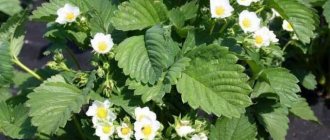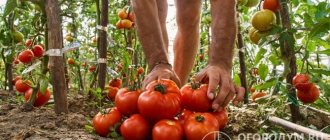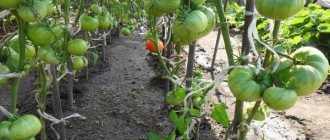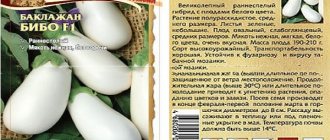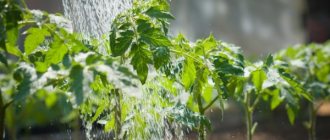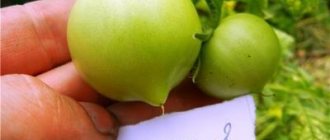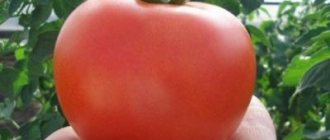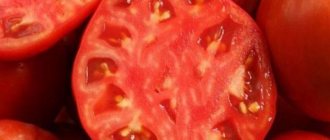» Vegetable growing » Tomatoes » Varietal characteristics of tomato President
0
3246
Article rating
The President hybrid tomato was bred by scientists from Russia and registered in 2007. Dutch breeders worked on the President 2 variety. It appeared in 2008, and in 2011 it was registered in the Russian registry. Both varieties are popular among gardeners due to their taste and high yield.
- Agricultural technology
- Transplantation into open ground
- Care
- Characteristics of the variety President 2
- Description of the bush and fruits
- Productivity
- Disease resistance
- Use of fruits
- Transportability
- Keeping quality
- Agricultural technology
- Soil preparation
- Planting and watering
- Reviews from gardeners
Varietal characteristics of tomato President
Characteristics and description of the hybrid variety
President F1 tomatoes are grown under temporary shelters in a greenhouse. In the south of Russia, the variety can grow in unprotected soil.
In greenhouse conditions, the hybrid grows above 2 m; it is a powerful liana-like plant with small foliage of a rich green color.
The first peduncles form above the 7-8 leaf, the subsequent ones - after 2 leaves. Each cluster bears 5-6 fruits. All tomatoes are approximately the same in weight and size (see photo).
Tomatoes begin to ripen 2 months after planting the seedlings. The first fruits are harvested in the second half of June. The cultivar has extended fruiting: the formation of ovaries continues until cold weather.
The tomatoes have a good taste for a hybrid, with a slight sourness. Tomatoes have thick skin, dense pulp with 4-7 seed chambers. They do not crack, tolerate long-distance transportation well, and can be stored for 2-3 months.
The peculiarity of the hybrid is that the tomatoes do not shrink during the growing season. The fruits on the upper clusters are the same size as those on the lower ones.
What is unique about the President 2 F1 tomato fruit?
The beauty of the fruit itself and its characteristics is where you should start describing the President 2 F1 tomato first. Seeing tomatoes like these, a person begins to admire the taste characteristics without even tasting them. And this is no wonder with such beautiful-looking tomatoes. Smooth, flat-round, with dense pulp. When fully ripe they turn orange-red, and when unripe they are light green. The weight of one tomato can be about 380 g. There is no green spot in the area where the stalk is attached. Such fruits are valued very highly on the market, and consumer demand for them does not stop.
Due to the fairly dense peel, the fruits are not subject to deformation during transport. Due to the effects of temperature changes and humidity levels, they are able to maintain their integrity for 3 weeks.
The soft part of the fruit is juicy, but invariably dense. There are no voids in the seed chambers; all cavities are filled with fruit pulp and seeds. Despite its elasticity, meatiness and density, reviews of the President 2 F1 tomato regarding its taste are mixed. Fruits picked not so long ago may not yet have excellent taste. However, after “ripening” they acquire exactly the aroma for which they are valued primarily by many consumers.
To do this, they are allowed to rest for about 10 days at normal room temperature and always in a dark place. As a result of biochemical processes in the fruits, they will gradually acquire the characteristic level of sugar content and aromatic properties found in a classic tomato. And here the tasters of the fruits, after they have ripened, can give them a well-deserved rating. And it is at this moment that reviews of President tomatoes indicate the appearance of missing piquancy in their taste.
Hybrid tomatoes are presented as salad tomatoes, but they are also suitable for making tomato products. In addition, they are quite appropriate for winter preparations.
Timing of sowing seeds
The President hybrid seedlings are prone to stretching; planting material should not be sown earlier than 50-55 days before planting in the ground.
For cultivation in a greenhouse, sowing is carried out at the beginning of March in the northern regions, in the middle of the month - in the southern regions.
For cultivation in open ground, seeds are planted in the southern regions on March 15-25, in areas with a harsh climate - in early April.
Seedlings grow strong and stocky when additionally illuminated with fluorescent lamps. Before planting in the ground, plants are hardened for 7-10 days.
On a note! Tomatoes should be planted in a greenhouse at the stage of development of 7-8 true leaves. The presence of buds is undesirable; at first the plant must spend energy on creating a strong root system.
How to grow tomato seedlings yourself
The President tomato variety is recommended for all regions, but in the north it should be grown in greenhouses, and in the south of the country its seeds can be sown in the ground. However, due to the long period of fruiting, the seedling method of cultivation would be preferable.
Optimal timing
Early ripe tomatoes are sown at a time that depends on the region and growing conditions. In central Russia, they are sown at the end of March, but if the tomatoes are planted in a greenhouse, they can be sown earlier. Tomato seedlings of the “President” variety are planted in a permanent place at the age of 50–55 days from emergence.
Soil mixture
It is worth taking care of preparing the soil for seedlings. You can buy it, or you can prepare the following mixture - mix garden soil with peat (humus) and sand in a 1:1:1 ratio. You can add a half-liter jar of ash and 20 g of superphosphate to the prepared soil mixture. The finished mixture must be disinfected. You can use the following methods:
- pour boiling water or a solution of potassium permanganate;
- bake in the oven at +80…+90 °C;
- treat with a 3% solution of copper sulfate.
Description and characteristics of the Ataman grape variety, history and cultivation rules
Growing container
The seedling container can be any of your choice:
- Boxes. Their advantage is the possibility of reusable use and ease of transportation. It is important that the plants do not outgrow them and do not closely intertwine their roots. Plants should be removed from them carefully.
- Plastic cassettes. They require searching for a pallet and are difficult to transport.
- Plastic cups. They are convenient to use and inexpensive, but they are not easy to transport. They are often replaced with homemade products made from plastic bottles. You need to make drainage holes in them yourself.
- Peat cups and tablets. They additionally nourish plants, but are more expensive and require more frequent moistening.
- Seedling pots. Reusable containers, ideal for seedlings. Tomatoes need pots 12–17 cm deep and the same width. Their disadvantage is that they take up a lot of space, are difficult to transport, and plants must be removed from them with care.
Seed preparation
Before planting in the ground, it is recommended to disinfect seed material by placing it in a light pink solution of potassium permanganate for 20 minutes. Then it should be rinsed well. To ensure the germination of seeds, they must be germinated before sowing.
To do this, they are distributed over damp gauze and covered with it on top. At the same time, they can withstand temperatures of about +22…+30 °C. Every day the seeds are checked for germination and the moisture content of the tissue is monitored. They usually appear in the next few days. To improve seed germination, you can add stimulants (for example, Epin) when soaking.
Sowing seeds
Seeds are sown immediately in separate pots or in one seedling container, followed by picking in the phase of 2-3 leaves. The soil is moistened before sowing. Furrows are made with a depth of about 1 cm and row spacing of 4 cm. The seeds are placed in them at a distance of 2 cm from each other, then covered and slightly compacted on top with soil.
When sowing a seed in a separate container, it can be buried 1 cm in the center of the pot using a pencil. After sowing, the soil is sprayed from above with water, and the container itself is covered with film and placed in a warm place (+25 ° C). Every day the film is opened, the moisture content is checked and aired for 20 minutes.
Seedling care
When sprouts appear, the container with tomato sprouts is transferred to a illuminated place with a lower temperature of +15...+18 °C. Tomatoes are light-loving crops and it is best for them to choose the most illuminated window (south, east, west). Otherwise, you will have to illuminate this crop with a fluorescent lamp for up to 12 hours of daylight, placing it on top of the plants.
The seedlings should be watered during the day with settled warm water at +25…+28 °C. Tender sprouts are not watered at first, but sprayed, preventing the soil from drying out, or the soil is moistened with a syringe. Tomato seedlings, starting from two weeks of age, can be fed with superphosphate or complex fertilizers containing phosphorus and potassium. Before planting in the ground, such fertilizing is done 2 more times.
Hardening of seedlings
A few weeks before planting, the seedlings begin to harden off. This is done in warm weather by placing containers of tomatoes on the balcony. First, the tomatoes spend a little time there (30 minutes). Then the time period is gradually increased and on the last day the plants are already outside for the whole day. At the same time, the balcony window opens, and the seedlings gradually get used to the sun's rays. If there is no balcony, then you can open a window for hardening. There should be no drafts.
Features of cultivation and care
The variety is unpretentious and does not require special care. Basic agrotechnical measures during cultivation:
- The bush is formed into 1-2 stems, and regular pinching is carried out.
- Immediately after planting, the plant is tied to a trellis. As the culture grows, it needs to be fixed several times.
- The tomato needs feeding. The first is carried out 2-3 weeks after planting the seedlings with organic fertilizer: infusion of mullein, chicken droppings or nettles. During the period of fruit ripening, the plant needs potassium-phosphorus supplements. The hybrid responds well to foliar spraying of mineral fertilizers on the leaves.
- During flowering, the tomato is sprayed with a 2% boric acid solution. This procedure not only improves fruit set, but also increases the percentage of sugars in the pulp.
- President tomatoes have an extensive root system; they are watered once a week, but abundantly. The water requirement per bush is 10-12 liters. Irrigation is carried out at the root, excluding moisture from entering the stem and leaves. In August, the number of waterings is sharply reduced.
- Weeding and loosening are done carefully, trying not to damage the surface roots. Mulching between rows has a dual function: it inhibits the growth of weeds and prevents the development of infectious diseases.
- After tying the eighth cluster, it is recommended to pinch the top of the plant to allow the tomatoes to fully form.
- The heavy load on the bush forces you to remove some of the tomatoes at the stage of technical ripeness. Tomatoes ripen well at home and do not wrinkle during storage.
Not only the stems, but also the tomato brushes need a garter. Each bunch weighs about one and a half kilograms and can break off under the weight of the fruit.
Diseases and pests of the hybrid
Tomato President F1 has high immunity to fungal diseases of nightshades: brown spot, Alternaria, blossom end rot. The hybrid has an average degree of resistance to late blight. Preventive treatment with 1% Bordeaux mixture or other copper-containing fungicide is recommended, no later than 3 weeks before harvesting the fruits.
Treatment with Fitosporin every 10-14 days during the growing season not only serves as protection against fungal diseases, but also increases soil fertility.
Preventive measures to prevent the development of diseases when growing tomatoes in a greenhouse:
- thorough autumn cleaning of plant debris from the site;
- soil treatment with the Baikal preparation, which must be carried out in the fall and spring before planting;
- sowing after harvesting mustard as green manure (the essential oils of this plant are destructive to late blight).
The above-ground part of the bush is characterized by hard foliage, so the President is rarely attacked by insect pests. They prefer to settle on varieties with more delicate tops. As a preventative measure, you can spray the bushes with the biological preparation “Fitoverm”, which has low toxicity.
Landing region
After a series of tests, it was possible to find out that the yield of the President 2 F1 variety practically does not depend on the type of planting (in film greenhouses or on open ground) or on the region. The variety is quite unpretentious and tolerates any external climatic influences well, so it is popular not only among farmers who grow vegetables in large quantities, but also among amateur gardeners who plant a small number of seedlings.
To obtain maximum yield in cold conditions, it is recommended to plant tomatoes in greenhouses and greenhouses. In the middle zone and in the southern regions this is not a mandatory condition. The amount of sunlight and sudden temperature changes do not affect the yield.
Advantages and disadvantages
Positive qualities of the President F1 tomato:
- early ripeness, extended fruiting;
- stable yield in any weather conditions;
- high resistance to diseases, rarely affected by pests;
- high taste and presentation;
- versatility of use;
- ease of care;
- good transportability, long-term storage.
Flaws:
- lack of a characteristic “tomato” aroma;
- Tomatoes need gartering of stems and brushes several times a season.
When harvested tomatoes are stored in a dark place for 7-10 days at 20˚C, fermentation occurs and the sugar content increases. The taste of tomatoes is significantly improved.
Similar hybrids
Some cultivars have characteristics and variety descriptions similar to the President tomato:
- Tomatoes Evpator F1 are an indeterminate type hybrid that ripens in 95-110 days. Each cluster produces 5-8 red fruits weighing 130 g.
- Polbig F1 tomatoes are a cultivar 1.3 m high, with red fruits weighing 200-250 g. It produces a stable harvest, tolerates high humidity and temperature changes, and rarely gets sick.
- Rhapsody NK is a tall variety that is distinguished by its reliability. Gives a harvest of 5-6 kg per plant in any weather. Red tomatoes weighing 150 g do not crack and are stored for a long time.
Hybrid President 2 is considered an improved version of the original variety. It has larger fruits, weighing 300-350 g, and is characterized by early ripening. Productivity is up to 4.7 kg per sq.m. Can be grown in open ground. This is one of the few varieties of Dutch selection that is included in the State Register of Russia due to its outstanding positive characteristics.
What is unique about the President 2 F1 tomato fruit?
The beauty of the fruit itself and its characteristics is where you should start describing the President 2 F1 tomato first. Seeing tomatoes like these, a person begins to admire the taste characteristics without even tasting them. And this is no wonder with such beautiful-looking tomatoes. Smooth, flat-round, with dense pulp. When fully ripe they turn orange-red, and when unripe they are light green. The weight of one tomato can be about 380 g. There is no green spot in the area where the stalk is attached. Such fruits are valued very highly on the market, and consumer demand for them does not stop.
Due to the fairly dense peel, the fruits are not subject to deformation during transport. Due to the effects of temperature changes and humidity levels, they are able to maintain their integrity for 3 weeks.
The soft part of the fruit is juicy, but invariably dense. There are no voids in the seed chambers; all cavities are filled with fruit pulp and seeds. Despite its elasticity, meatiness and density, reviews of the President 2 F1 tomato regarding its taste are mixed. Fruits picked not so long ago may not yet have excellent taste. However, after “ripening” they acquire exactly the aroma for which they are valued primarily by many consumers.
To do this, they are allowed to rest for about 10 days at normal room temperature and always in a dark place. As a result of biochemical processes in the fruits, they will gradually acquire the characteristic level of sugar content and aromatic properties found in a classic tomato. And here the tasters of the fruits, after they have ripened, can give them a well-deserved rating. And it is at this moment that reviews of President tomatoes indicate the appearance of missing piquancy in their taste.
Hybrid tomatoes are presented as salad tomatoes, but they are also suitable for making tomato products. In addition, they are quite appropriate for winter preparations.
